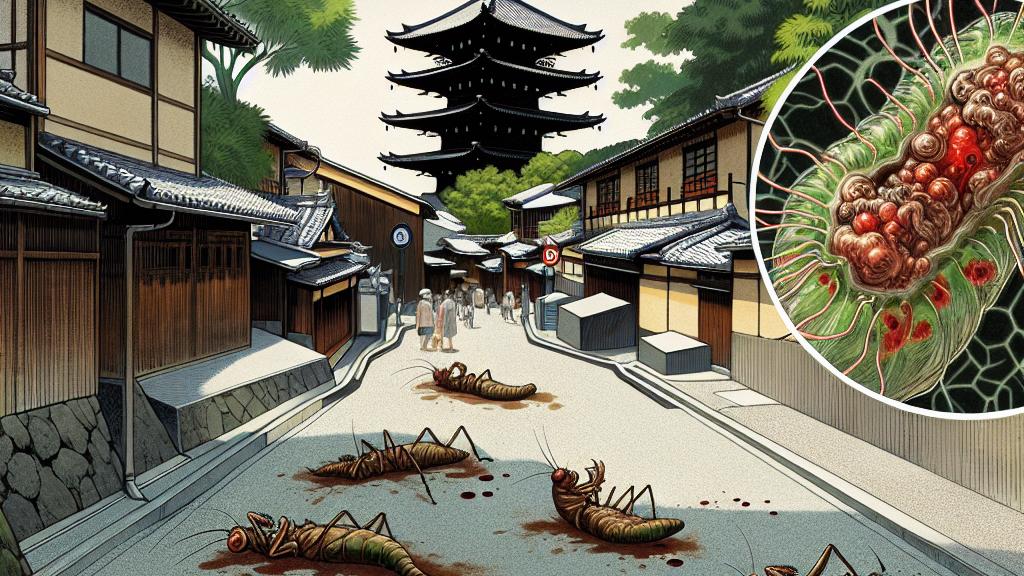The Surprising Control of Mantis Behavior by Parasite
Overview
- In a remarkable revelation, Japanese researchers uncovered that mantises found dead on asphalt are often puppeted by a clever parasite.
- The hairworm parasite intricately manipulates mantis behavior, driving them to seek water and ultimately leading to their demise.
- This gruesome interaction underscores the complex relationships within nature and the profound consequences of human influence on ecosystems.

The Parasitic Influence in Kyoto
Imagine strolling through the streets of Kyoto, where the quiet beauty of the city is occasionally interrupted by the sight of lifeless mantises sprawled on the asphalt. Researchers from Kyoto University delved into this eerie phenomenon and uncovered a striking paradox: many of these insects succumb to the control of a fascinating, yet grotesque parasite known as the hairworm. This parasite begins its life cycle in water and typically infects aquatic insects. When a mantis inadvertently consumes one of these infected hosts, it sets off a chain reaction. Inside the mantis, the hairworm thrives and eventually hijacks its brain, compelling it to seek out asphalt, thinking it's approaching a safe water source. It's an unsettling reminder of how evolution can twist the natural instincts of organisms into tools for survival, showcasing a darker side of life in the wild.
Understanding the Mechanism of Control
But how exactly does the hairworm exert such control? Picture this: the hairworm, after maturing in its mantis host, utilizes sophisticated tactics to influence its behavior. It lures the mantis toward light reflections that mimic shimmering water, igniting a strong desire to dive in. In a series of meticulously designed experiments, researchers discovered that infected mantises exhibited an overwhelming tendency to approach asphalt, mistaking it for their natural habitat. This bizarre behavior not only highlights the parasitic mastery of manipulation but also serves as a compelling example of nature's complexities. It raises questions about free will versus instinct in the animal kingdom, where some creatures unwittingly act against their best interests due to the influence of others.
Human Impact and Ecological Implications
The impact of human activity on these intricate relationships cannot be overlooked. As researchers pointed out, while hairworms have evolved remarkably to control their hosts, human activities like asphalt paving disrupt these delicate balances. This dilemma resonates deeply in Kyoto’s famous Philosopher's Path, where local residents find themselves divided over proposed road improvements. Some passionately argue that such enhancements are necessary for safety and accessibility, while others express concern about the potential repercussions for biodiversity and ecosystem health. Their debates exemplify a larger issue: the need to strike a balance between modernization and environmental conservation. Each decision, no matter how small, can send ripples through the intricate web of life, emphasizing our critical role in protecting fragile ecosystems.

Loading...